Italian cuisine is perhaps one of the most popular cuisines in the world. You can hardly find a major city that doesn’t have a restaurant somewhere that serve Italian dishes within its borders. And this is true even in Asian and the Middle Eastern countries. This may be partly because of the universal appeal of Italian cuisine’s two flagship dishes, pizza and pasta.

However, Italian cuisine is so much more than those two undoubtedly delicious food. As a matter of fact, it is as rich in history and traditions as the Italian peninsula itself. You see, most (if not all) traditional Italian dishes have evolved over the centuries amidst numerous political and social changes. And aside from that, several other civilizations in the past have also heavily influenced it.

So many factors have influenced Italian cuisine over the centuries. And according to culinary historians, many Italian dishes go way back to the time of the ancients. Among the major influences to Italian cuisine are the Etruscans, Ancient Greeks, and Ancient Romans.
The Etruscans were an ancient civilization that once settled in what is now known as northern Lazio, western Umbria, and Tuscany. Discovered through some ancient household items, historians theorize that Etruscans typically ate legumes, cheese, garlic, and onion. Despite not being big meat eaters, however, they might also have raised pigs.
According to discoveries, ancient Greek cuisine revolved around three main ingredients, which is olive oil, wheat, and wine. Other common food stuff you might find in ancient Greek kitchens were eggs, fruits and vegetables, bread, and dairy products.
Greeks also had meat in their menu, but it might have depended on social status and location. In cities, domesticated animals such as pig, sheep, and goats raised for food might have been common. In the countryside, on the other hand, game such as wild geese and other fowls might have been typical.
Heavily influenced by ancient Greeks, ancient Romans nevertheless put their stamp on some of the traditional Italian dishes today. For instance, bread made from various grains were common fare for people living in urban areas, as well as for soldiers in the military.
Other food items common in ancient Roman kitchens were berries and nuts, dried fruits, dairy products, grains and legumes. There were also herbs and seasonings, sweeteners, olive oil, root crops, vegetables, and wild mushrooms.
Historians further theorize that the modern Italian cuisine we know today began to earnestly evolve after the fall of the Roman Empire. This is because it was the time that Italian regions started to develop their own traditions and hence their own traditional dishes. It was also the time that exploration of the New World began. Political and social changes were happening in Europe, and many new spices and herbs were discovered and brought back home.
Among the distinctive qualities of Italian dishes is the use of good quality and fresh ingredients, and the simplicity of their preparation. This is why many traditional Italian dishes have ingredients according to season and geographical location. Moreover, since the Italian peninsula has a pretty diverse landscape, many traditional recipes can be location-specific.
In the mountains, Italian dishes are typically heavy meat dishes or cured fish. Meanwhile, in coastal areas you will often find some seafood in most of their recipes. Also, pasta in the south are often made of semolina and dried while in the north, they prefer fresh pasta and often they’re made with eggs.
To give you some idea on the diversity of Italian dishes, below are some excellent examples.

It is an air-dried, salted beef typical of the Lombardy region. It is aged for two to three months, and has a dark red or purple color and a somewhat sweet musty smell.

It is a dry-cured pork cold cut typical of the Tuscany region. Lightly seasoned with white wine, garlic, and some herbs and spices, it is then salted and stuffed into a sausage casing. After that, it is hung and cured for about six months. It is typically more expensive than other types of salami, and has a tender fatty texture and delicate flavor.
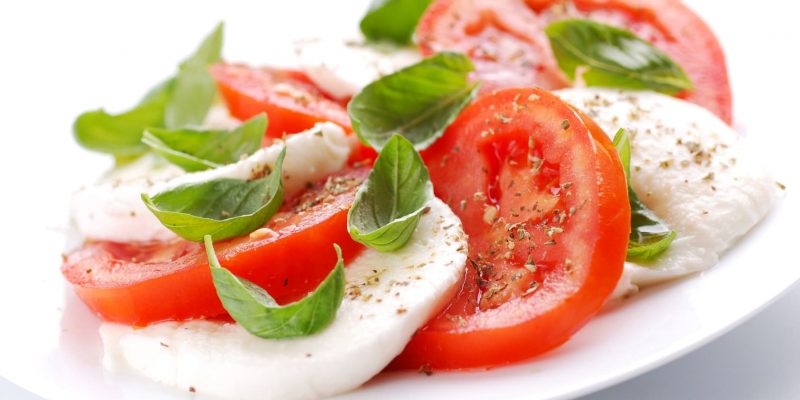
Not exactly a cold cut like the other two, this is nonetheless a very popular antipasto. It is basically a salad with slices of tomatoes and fresh mozzarella, and topped with fresh basil and seasoned with olive oil and salt. Its colors are often believed to be a nod to the colors of the Italian flag.

A simple Italian white bread typical of the Veneto region, it is made with wheat flour, salt, water, and yeast. It was invented by Francesco Favaron, a baker in Verona.

Basically a plain flat bread or pizza dough, it is typically simply topped with coarse salt. A typical street food in Rome, it is made with flour, extra-virgin olive oil, water, yeast, and salt. It is often eaten as bun stuffed with vegetables and/or cured meats.

Otherwise known as La Mafalda or Sesame Seed Sicilian Bread, it is made of durum wheat flour, yeast, water, and of course, sesame seeds. Baking it can take several days since the dough needs to undergo some fermentation. As hinted by its name, it’s a pastry typical of the island of Sicily.

A soup dish typical of the Lombardy region, it is made with various kinds of meats, herbs and spices, grains, pasta, and lots of leafy vegetables. It is basically a dish that you could whip up using leftovers, its ingredients are typically simmered in vegetable or meat stock for an hour or so.

Literally meaning “reboiled”, it is a hearty soup made with various vegetables, cannellini beans, and leftover bread. It is quite a popular soup dish from the Tuscany region. According to culinary experts, it was originally a peasant dish that basically consists reheated vegetable soup, often leftover minestrone, from the previous day.

More popularly known as the Italian Wedding Soup, it is a traditional dish typical of the Campania region. A perfectly delicious combo of meat and vegetables, this hearty soup is quite popular not only in Italy, but also in North America. It is called a Wedding Soup not because it is served during weddings, but because it refers to the perfect combo (or marriage) of the meat and vegetables in it.
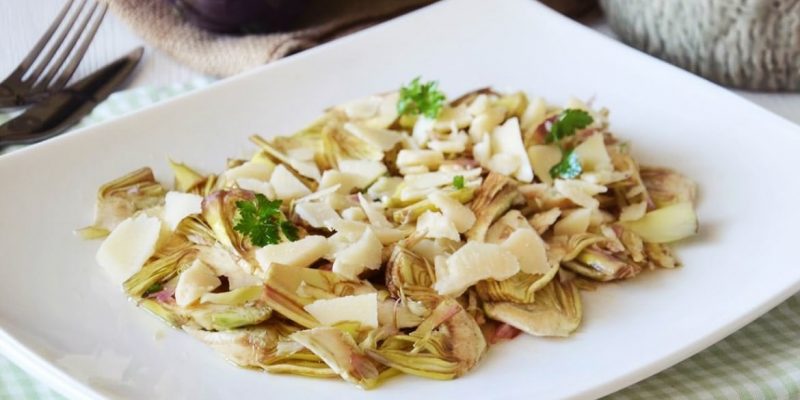
Basically a salad made with raw artichokes and slices of Parmigiano Reggiano or Grana Padano cheese, and garnished with extra virgin olive oil and balsamic vinegar. It is typical of the Emilia-Romagna region and often prepared in spring, when artichokes are in season.

Panzanella is mainly made of tomatoes and chunks of leftover bread that is dressed with olive oil and vinegar. It is considered a summer salad typical of the Tuscany region. Aside from bread and tomatoes, it may also have onions and fresh basil leaves.

Typical of the Amalfi Coast in the Campania region, caponata di Amalfi is a salad that has tomatoes, mozzarella, basil, and bread. The bread used in this salad is a crispy local brown bread called friselle. Or try the original Sicilian eggplant caponata recipe.

A pasta dish typical of the Emilia-Romagna region, it is unlike most lasagna recipes in the United States because it doesn’t have mozzarella. Instead, it uses lasagna sheets, ragu bolognese meat sauce, and creamy besciamella sauce.
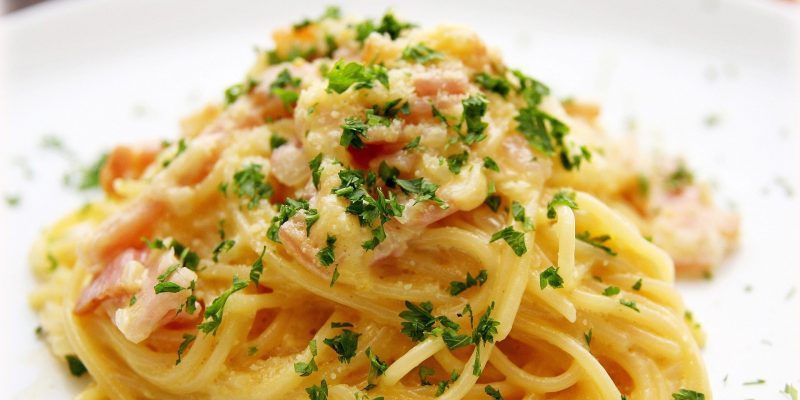
It is a pasta recipe that is originally from the Apennine hills, near Rome, in central Italy. It basically consists of pasta, eggs, cheese, and pancetta. According to celebrity chef and cookbook author Lidia Bastianich, it was a favorite dish of shepherds.

Quite a famous Sicilian pasta dish, it is made with tomatoes, fried eggplants or aubergines, basil, and grated ricotta salata cheese. Its name is in reference to the opera entitled “Norma” by Vicenzo Bellini.

This pasta dish combines al dente penne pasta with a creamy and luscious tomato-vodka sauce, infused with garlic, onions, and a hint of red pepper flakes for a subtle kick. The vodka adds a unique depth of flavor and enhances the richness of the sauce, creating a decadent and satisfying meal. Perfect for both casual weeknight dinners or special occasions, Penne alla Vodka is a crowd-pleaser that will transport your taste buds straight to Italy.

More commonly known as Squid Ink Risotto, it is risotto dish typical of the Veneto region. It has cuttlefish or squid, onion, garlic, white wine, olive oil, and of course, rice.

A simple risotto dish made with meat ragu sauce, white wine, grated cheese, and rice. It is typical of the Lazio region.

As its name suggests, it is a risotto dish made with gamberi, which simply means “shrimp” in English. It is a traditional dish typical of the island of Sicily. Other necessary ingredients are garlic, onion, fish stock, butter, extra-virgin olive oil, parsley, lemon zest, and of course, rice.

A seafood dish typical of the Veneto region, it is actually one of the symbols of the city of Vicenza. Contrary to its name, however (and this has been debated extensively by some), the fish for this recipe is actually not baccalà, but stoccafisso. Both come from the same fish, it’s only the preservation method that’s different. Baccalà is salt-cured while stoccafisso is air-dried. Aside from stoccafisso, the recipe also calls for anchovies, milk, flour, onions, Parmigiano-reggiano cheese, and olive oil.

A fish stew typical of the port city of Livorno in Tuscany, it calls for various kinds of fish and shellfish. The fish and shell fish often used in this traditional dish are monkfish, red snapper, grouper, eels, clams, crabs, shrimp, cuttlefish, mussels, and octopus. Traditionally, people would add any “catch of the day” to this stew. In some versions, chefs would even put a stone from the sea to the dish. It is said that the popular Italian-American dish called cioppino is a variation of cacciucco.

Typical of the island of Sicily, this traditional seafood dish calls for fresh busiate pasta with a swordfish and eggplant sauce. Not such a wonder since its recipe name literally means “Busiate with swordfish and eggplant” in English. Busiate pasta is usually prepared with pesto Trapanese, with a few exceptions such as in this dish, of course.

Made with cross-cut veal shanks, it;s a traditional dish typical of the Lombardy region, particularly in Milan. Traditionally, to make ossobuco, the veal shanks are braised with vegetables in white wine and broth.
It is then seasoned with cinnamon and bay leaf, and garnished with gremolata. In recent years, however, another version has become popular, and that is to add tomatoes, carrots, celery, and onions to the dish, while the gremolata garnish is optional.

A traditional dish typical of the Lazio region, coda alla vaccinara is a modern Roman oxtail stew that consists of oxtail and different kinds of vegetables, particularly celery and carrot.
Back in ancient Rome, butchers cut cattle into five sections. Nobles got the prime cuts while the low ranking butchers in the vaccinari (slaughterhouses in the Regola District) got the quinto quarto.
These were the offal, or those parts that were usually thrown away. The butcher would then sell these to the local osteria, which would cook these leftover parts. One such dish from that is the coda alla vaccinara.

Literally meaning “Donkey stew with potatoes”, this traditional dish is typical of the Puglia region and is a “poor man’s stew”. In the past, donkey and horse meat were among the cheapest meat available in the market.
Most of the horse and donkey meat then were from animals that were longtime labor animals, which resulted in tough meat. As a result, they were often prepared in stews that need lengthy cooking time.
This dish consists mainly of donkey meat with bone and/or cartilage, potatoes, onion, extra-virgin olive oil, red wine, paprika, and basil. In other versions, some also add other vegetables such as carrots, celery, and tomatoes.

The Italian version of the French dish ratatouille, its roots can be traced back to Provence, France. In recent years, however, it has grown quite popular in Italy, especially in the Piemonte region, which shares borders with France and Switzerland.
Its main ingredients are zucchini, onion, red and green peppers, tomatoes, celery, and of course, eggplant. Add spices such as garlic, basil, thyme, laurel, saffron, and pepper, as well as some extra virgin olive oil, salt, and peanut oil to taste.

A typical dish of the Lazio region, particularly in the city of Rome, carciofi alla Romana literally means “Roman-style artichokes”. It is one of the popular artichoke dishes in Rome.
This dish is most often served in spring, when artichokes are in season. It is a simple dish made by first soaking the cleaned or trimmed artichokes in lemon water, stuffing them with a garlic, mentuccia, salt, and black pepper mixture, and then letting them simmer in extra virgin olive oil and water over low heat until the artichokes become tender.

One of the most popular contorno dishes in Italy, there are several versions of it, from the northern to the southern parts of the country. It is typical of Naples in Campania and the island of Sicily. The main ingredients for this dish are eggplant slices fried in peanut oil, tomato puree with olive oil and onions, Parmesan cheese, mozzarella, basil, salt, and pepper.
Similar to lasagna, you stack the eggplant slices, tomato puree, and cheeses one on top of the other, until you use all the ingredients. And the top layer should be tomato puree, Parmesan cheese, and mozzarella. Then you bake it in the oven for over half an hour.
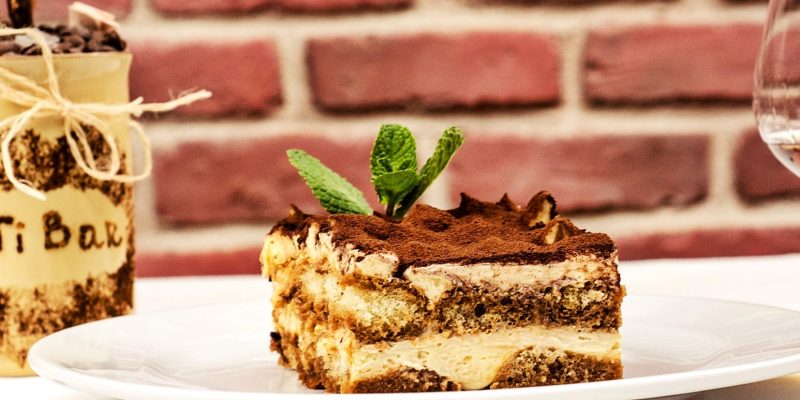
One of the most well-known Italian desserts, aside from gelato, tiramisu is a lusciously delicate no-bake layer-cake made with mascarpone cheese, eggs, ladyfingers, coffee, and cocoa powder. Now, as to its true origins, there’s some bit of a debate regarding that. Some say it’s originally from Friuli Venezia while others say Piemonte. There are also others still who say it came from Veneto. Whichever region you may credit it to, however, one thing is certainly undeniable: Tiramisu’s popularity is well-deserved.

Biscotti are almond biscuits that have been baked twice. In fact, the word “biscotti” literally means “twice cooked”. These biscuits are typical of the city of Prato, in the Tuscany region. They are dry and crunchy biscuits that are often oblong in shape. It is mainly consists of flour, sugar, pine nuts, eggs, and almonds. It is first cooked as one big slab of dough.
Then it is sliced into smaller oblong pieces and baked again, making the dough dry and hard. Another thing to note is that in most of Italy, and also in Argentina, these particular biscuits are actually more recognized as cantucci. The Italian word “biscotti” means “cookies” in general. However, in North America and the rest of the world, people know them more as “biscotti”.

Another well-known, and well-loved, Italian dessert is the cannoli. It is basically a pastry that consists of a hard fried tube-like shell that has a sweet ricotta filling. It is typical of the Sicily region and is actually a staple in Sicilian cuisine. Once a special treat served only during Carnevale season in Palermo and Messina, it is now a common and popular dessert all year-round throughout the Italian peninsula.

Caffè is perhaps one of the beverages most associated with Italy. As a matter of fact, an Italian named Angelo Moriondo invented and patented an early prototype of the espresso machine. And even though there are no actual coffee plantations in Italy, the best preparation methods were certainly developed by Italians. They are experts at maximizing the enhancement of the delightful aroma of coffee beans. It’s no wonder then that coffee drinking has become an integral part of Italian society today.
Types of coffee you may find in Italy are:

Another integral part of Italian dining is, of course, the wine. For centuries, Italians have been drinking wine when during major meals such as lunch or dinner. This is because Italians believe that the right wine enhances the flavors of the food. And well, traditional Italian dishes in each region do somehow reflect their own region’s wines.
Not only that, the Italian peninsula is also among the oldest and biggest producers of fine wine in the world. In fact, the country held the top spot in the international wine production statistics, producing almost a quarter of the global production with a record of 50.9 million hectoliters during the 2016 harvest. Moreover, Italian wine has become more and more popular in other countries over the years. So it’s really no surprise that Italians would be the first to love their wines.
Below are some of the popular Italian wines available in the market today:

Aside from wines and coffee, Italians are also big consumers of liqueurs and cocktails. Liqueurs, by definition, are sweet alcoholic drinks that have an array of different flavors such as fruits, nuts, herbs, spices, or seeds. Cocktails, on the other hand, are alcoholic drinks that may contain wine or liquor mixed with other ingredients such as fruit juices, flavoring, or other types of beverages.
Some of the well-known Italian liqueurs are:
Some of the popular Italian cocktails are:
Food is obviously a big deal in Italian culture, so it’s no wonder that for special occasions, they would also have some special dishes to go with them. Many of the special events and feasts in Italy are religious holidays. Below are some special Italian dishes that are typically prepared for some of the county’s special occasions.

A widely popular Christmas eve feast, it is the tradition of cooking and serving seven courses of fish and seafood dishes to celebrate the holiday. It’s a highly popular in Italian-American families and communities in the United States, as well as in southern Italy. Some of the most common Italian dishes served during the Feast of the Seven Fishes are Capitone Fritto, Cacciucco or Cioppino, Calamari Ripieni, and Fritto Misto di Mare.
In most of Italy, the feast is typically called, La Cena della Vigilia, which simply translates to “Christmas Eve dinner”.

An Italian quiche usually prepared during Easter, torta pasqualina is typical of the Liguria region. It is puff pastry dough with a filling of ricotta cheese, Parmigiano Reggiano cheese, blanched and sautéed Swiss chard with onions, finely chopped parsley and marjoram, and eggs.

Otherwise known as St Joseph’s Day cake, zeppole di San Giuseppe is a deep-fried dough ball with custard or pastry cream in middle and typically topped with a sour cherry. Depending on the region, zeppole can be simple deep-fried dough balls. Other names for this delicious dough balls are Bignè di San Giuseppe, sfinge, and frittelle.
There are different versions of it all over Italy, particularly in Calabria, Malta, Sardinia, and Sicily. It is likewise very popular in Italian-American and Italian-Canadian communities in North America.
Another characteristic of Italian dishes is that some ingredients can be distinctively Italian. Some of these are:
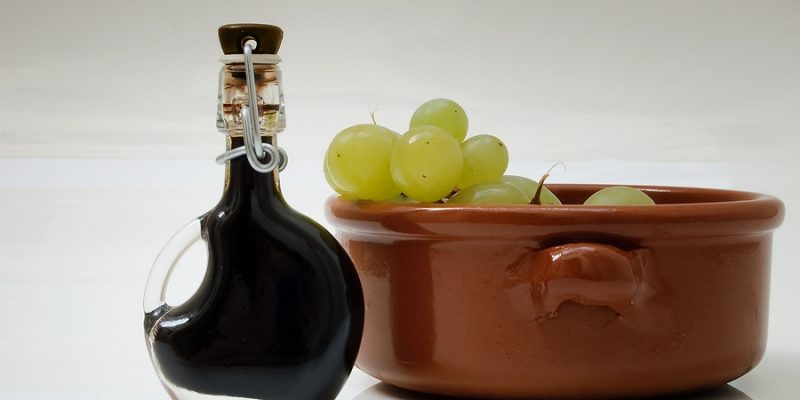
Called balsamic vinegar in English, Aceto Balsamico is a thick, dark, and concentrated vinegar made from grape must or red wine used as a condiment or as an ingredient to various traditional Italian dishes. Given the Protected Designation of Origin label by the European Union, true balsamic vinegar are produced only in two localities in the Emilia-Romagna region: Modena and Reggio Emilia.
An important aromatic herb common in most traditional Italian dishes, the onion is a close relative of shallot. Although it is widely cultivated around the world, it is particularly wide used in Italian cuisine and is even one of the three main ingredients to soffritto.
Another distinctly Italian ingredient, olive oil from Italy is believed to be among the best in the world. It is one of the most common ingredients in Italian cooking. Whether it is for sauteing, grilling, sauce ingredient, or salad dressing, Italians often use olive oil. As a matter of fact, many people automatically associate olive oil with Italian cuisine.
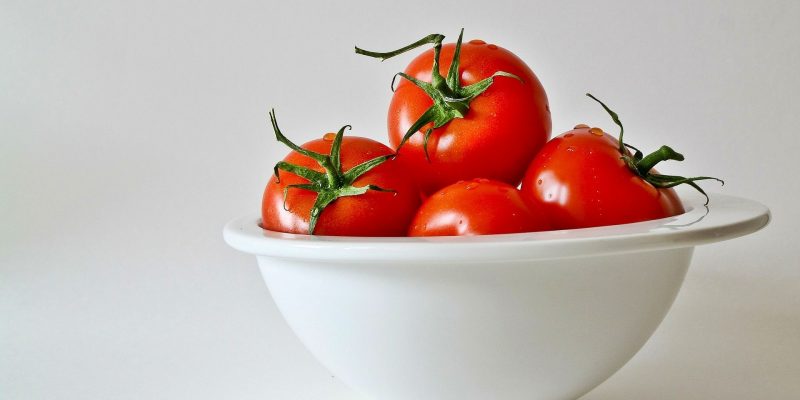
Tomatoes were not actually available in Italy when the Italian cuisine began. Despite this, tomatoes have become an an integral part to some of the most popular Italian dishes today. As a matter of fact, pizzas and tomato-based sauces such as passata di pomodoro and marinara sauce wouldn’t be the same today without the pomodoro.
One of the most popular Italian cheese is Parmigiano-Reggiano, which is Parmesan cheese in English, although it’s not the same. It is also an ingredient in many Italian dishes today. And it is not only a main ingredient in pasta dishes and pizza. Many soups and risotto dishes have Parmigiano Reggiano cheese. You can even find it in charcuterie boards, which is often consumed by itself or with cured meats and wine.
Typically associated with Northern and Central Italy, polenta is a dish of boiled cornmeal. Most people cook it as porridge or turn it into loaves. People often bake, grill, or fry these polenta loaves.
Polenta is often a complementary food to meat dishes. One of the ways it is cooked is by simmering the cornmeal in water. Continue to do this until it thickens with the same consistency as porridge. Another method is to let the water evaporate and then you shape the loaves into any shape you want. Here’s how to make polenta.

It is an Italian whey cheese made from the milk of sheep, cow, goat, or Italian water buffalo. Technically, it is whey leftover from cheese production. It is a main ingredient to several Italian dishes, including pastas, calzone, and even desserts. In fact it is one of the main ingredients in one of Sicily’s most famous desserts: cannoli and Napoli’s famouse dessert, sfogliatelle.
The Italian word for rice, it is certainly the main ingredient in risotto dishes. It is typical of the northern Italian regions. The main ingredients of many risotto dishes are butter, onion, broth, and white wine. Usually a primo or first course, it is typically served together with meat dishes. The types of rice often used in Italian dishes are Arborio, Baldo, Carnaroli, Padano, Roma, Maratelli, and Vialone Nano.
Also called “the diamond of the kitchen” this precious fungi are gourmet ingredients and can be quite expensive. Technically, truffles are edible mushrooms that thrive underground, near the tree roots of specific trees. Hunters harvest truffles in the wild using pigs or hounds to hunt them. Cooks and chefs use them in a variety of ways. Some use it to garnish salads, fried eggs, or buttered pasta. It can also be a great addition to a plate of creamy risotto.
Torta Pasqualina looks yummy. I wanna try it!
My fiancé gave me free rein on deciding the menu for our wedding reception and I chose Italian cuisine. I especially like the selection of risottos you included here (especially the one with shrimp) and I’m so torn on which one to choose or if it’s even feasible to get all three of them into the menu. I have always been fascinated by risottos because it’s like a weird middle ground between plain rice and porridge.
Thanks for the authentic Italian food list you provided. My boyfriend and I will go on a date at an Italian restaurant in Atlantic Beach. Since we’ll be celebrating our seventh monthsary, it’s good that at least I know what to expect in the menu. I am hoping to try their version of lasagna with bolognese meat sauce, and creamy bechamel sauce.